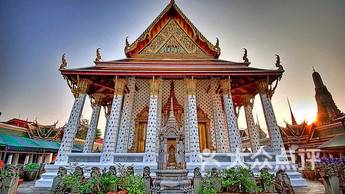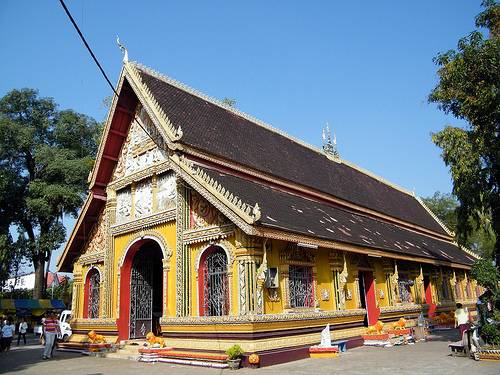Opposite the Presidential Palace, the temple is not large, and it takes about 15 minutes to walk around. The entrance fee is 10,000 Kip (about 1 USD). It was built around 1820 and is said to be the oldest temple in Vientiane. When you walk inside, you will find that this temple truly deserves the title of 'oldest' temple. Nearly a thousand Buddha statues are in ruins, and the roof is barely supported, with many structures showing signs of reinforcement. The entire Wat Sisaket seems to weakly lament to you the dynastic changes and storms it has endured.
The entrance is 100 meters southeast diagonally opposite the entrance of Wat Sisaket, a 2-minute walk. The overall architectural style is not much different from other temples, all with a magnificent feel. It is now the National Museum of Religious Art. Although it is called a museum, the interior is more like a large warehouse. It is worth mentioning that Wat Phra Kaew is famous for its dedicated Jade Buddha, which is very spiritual. My wish has already come true. The Jade Buddha is enshrined in the southeast corner of the 'large warehouse'. If you can't find it, just see where the locals are kneeling and praying. Photography is prohibited inside the museum.
The most popular temple with the most incense offerings. The ticket seller at the entrance will charge foreigners for tickets if seen, otherwise, no charge. Inside the main hall, you can see many devotees, kneeling in small groups around the monks, chanting scriptures. The stone Buddha statue at the innermost part of the main hall, which looks as if it is about to melt, survived the great fire and massacre by the Siamese in 1828. Locals revere it as the guardian deity of the city.
Pha That Luang
It takes 1-2 hours to thoroughly explore the entire area of Pha That Luang. The temples outside are free of charge. In the afternoon, around three or four o'clock, when the scorching sunlight pours in from the west, despite the scaffolding in the frame, the golden Pha That Luang is still very beautiful. There is a giant reclining Buddha on the south side of Pha That Luang, which is great for taking photos.
Patuxai
Visit in the evening around sunset. When the lighting system is turned on, it will inevitably evoke admiration for this city landmark and the entire city. That Luang is about 3 kilometers from Patuxai, a 15-minute drive. The recommended route is to arrive at Patuxai around 3-4 PM to climb to the top for a panoramic view, then visit That Luang for sightseeing and photography around 5-6 PM, and finally return to the city center to capture the night view of Patuxai.













